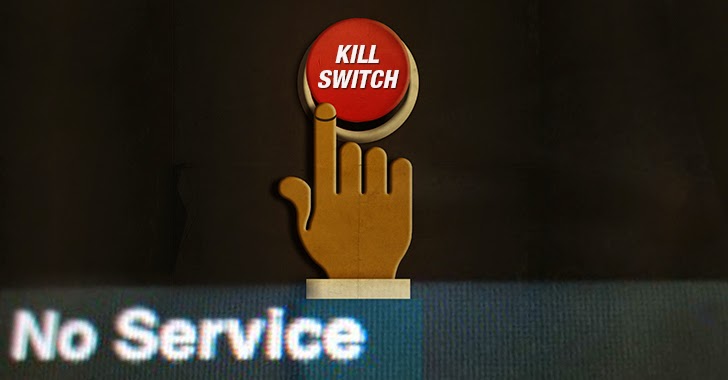Monday is the court-ordered deadline for the government to explain a secretive policy that allows it to use a “kill switch” on cell phone service among the population. The policy, adopted by the Department of Homeland Security in 2005, is called Standard Operating Procedure 303 and allows
…for the orderly shut-down and restoration of wireless services during critical emergencies such as the threat of radio-activated improvised explosive devices.
It allows the government to cut service “within a localized area, such as a tunnel or bridge, and within an entire metropolitan area.” The policy comes with a murky, questionable history.
The implementation of the policy was a reaction to the 2005 London subway bombing and was deemed necessary for national security. In 2005, all cell service in New York’s Hudson Tunnel was cut off for two weeks—a move that by the DHS’s own admission created
disorder for both Government and the private sector at a time when use of the communications infrastructure was most needed.
Due to the secrecy surrounding the policy, there is no concrete documentation to suggest that SOP 303 has been used to cut cell service. In 2011, however, all cell phone communication was cut on San Francisco’s BART (Bay Area Rapid Transit). This was done to disrupt a protest against a violent police officer who killed a homeless man. That same year, the White House claimed that the government had the right to
control private communications systems in the United States during times of war or other national emergencies.
In an effort to learn more about the justification for the BART shut down, the Electronic Privacy Information Center filed a FOIA request with DHS in July of 2012. DHS claimed it could not find any relevant documentation, leading EPIC to file a FOIA lawsuit. A lower federal court found the agency insufficiently complied with the request. By February of 2015, however, a higher court sided with a DHS appeal and ruled that
the [DHS] permissibly withheld much, if not all of SOP 303, because its release…could reasonably be expected to endanger individuals’ lives or physical safety . . . .
In spite of the federal government’s aggressive attempts to keep this information secret, EPIC filed a request last month for the court to revisit its decision, arguing that “if left in place, [it] would create an untethered ‘national security’ exemption.” This time, the court gave the government until this Monday, April 27, to explain the details of its policy, including under what conditions it may be implemented.
Alan Butler, a lawyer for EPIC, explained plainly that,
We’re not asking for detailed information about how [SOP 303] works … but about the rationale and the policy guidelines.
 The push toward a “kill switch” has been building for years (and predates cell phones and the Internet). In July of 2012, Obama signed an Executive Order that “granted the authority to seize private facilities when necessary, effectively shutting down or limiting civilian communications.” In 2010, a Senate Subcommittee on “Homeland Security” approved a kill-switch for the Internet and in 2014, the House of Representatives introduced a cell phone kill switch bill in the name of preventing smartphone theft. In August of that same year, California Governor Jerry Brown signed a bill requiring all smart phones made after July 2015 to have a built in kill switch. The bill has been criticized for granting dangerous power to both law enforcement and hackers.
The push toward a “kill switch” has been building for years (and predates cell phones and the Internet). In July of 2012, Obama signed an Executive Order that “granted the authority to seize private facilities when necessary, effectively shutting down or limiting civilian communications.” In 2010, a Senate Subcommittee on “Homeland Security” approved a kill-switch for the Internet and in 2014, the House of Representatives introduced a cell phone kill switch bill in the name of preventing smartphone theft. In August of that same year, California Governor Jerry Brown signed a bill requiring all smart phones made after July 2015 to have a built in kill switch. The bill has been criticized for granting dangerous power to both law enforcement and hackers.
The use of a kill switch has also been lambasted for what some view as an inability to prevent terrorist attacks. In fact, previous terror attacks have relied not on cellular communication, but merely on an alarm clock built into a phone — which would be unaffected by the use of a kill switch.
The dangers of granting such broad authority to government seem not only abundant, but obvious. As seen in the 2011 BART instance, the state is more than willing to dismantle communication for reasons beyond national security. The power to disrupt the citizens’ right to organize protests against state action is an unconscionable effort to control the population and silence dissent. That the government is so resistant to explain this power is reason enough to distrust it.
As Howard Feld, Senior Vice President of Public Knowledge, a public advocacy group, pointed out,
Understanding a policy should not compromise national security.
The DHS stubbornly disagreed. Asked to explain the decision to withhold basic procedural information from the public on the program, it responded only with,
We have no comment on this.
Although the court-mandated deadline has come and gone — as of midnight yesterday — without a response from the government, this story will be updated when and if they ever decide to offer an explanation for the shrouded policy.
Carey Wedler writes for TheAntiMedia.org, where this article first appeared. Tune in! The Anti-Media radio show airs Monday through Friday @ 11pm Eastern/8pm Pacific.


Be the first to comment on "Federal Government Ordered to Explain Why it Needs a Cell Phone Kill Switch"